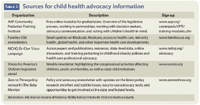Fighting childhood obesity: Resources for the community pediatrician. Part 2 of 2
Childhood obesity has escalated into one of the most - if not the most - significant public health concerns of the 21st Century.
Since 1980, the prevalence of obesity (body mass index [BMI] ≥ 95th percentile) in the United States has tripled. Currently, 9.5% of infants and toddlers are overweight (≥95th percentile of weight-for-length), 16.9% of children aged 2 to 19 years are obese, and 31.7% of all children are overweight (BMI ≥ 85th percentile).1
Although the obesity epidemic has stabilized in the past few years, prevalence rates remain unacceptably high, particularly among Hispanic boys, non-Hispanic black girls, and low-income preschool-aged children.2 Overweight and obesity in childhood often leads to adult obesity,3 and obese adults are at risk for diabetes, cardiovascular disease, and early mortality.4-8
At higher BMIs, health consequences such as elevated lipid concentrations and blood pressure emerge in the pediatric years,9 requiring the pediatrician to gain new expertise in the screening and management of these once-considered "adult" diseases.
The AAP policy statement on community pediatrics (2005) emphasizes that in a rapidly changing society, pediatricians must become integrated with the community to prevent and treat disease and disability.12 Former AAP President Robert Haggarty, MD, FAAP, reminds us, "We must become partners with others, or we will become increasingly irrelevant to the health of children."13
Where to begin

Newsletter
Access practical, evidence-based guidance to support better care for our youngest patients. Join our email list for the latest clinical updates.
Reading between the lines: teaching teens to use nutrition facts labels
March 4th 2025Colleen Sloan, PA-C, RDN, emphasizes the importance of learning to spot added sugars, compare portion sizes, and recognize misleading marketing claims to give patients a practical tool to take ownership of their health.